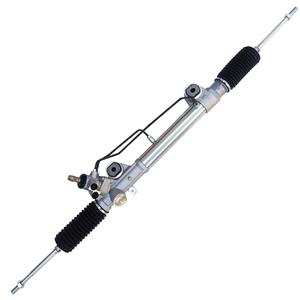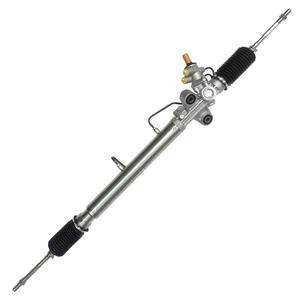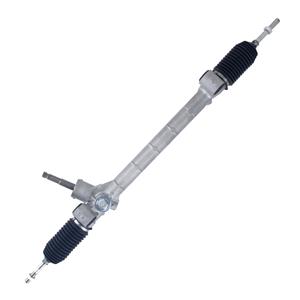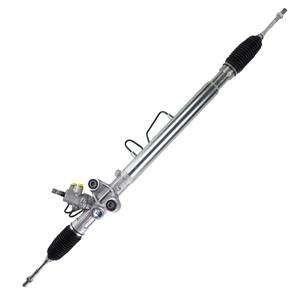Unpowered vs. Manual Steering Rack: Which One Puts More Pressure on Components?
In the steering system of a car, the steering rack is one of the core components. It is responsible for converting the rotation of the steering wheel into the rotation of the wheels, ensuring that the driver can accurately control the direction of the vehicle. The traditional manual steering system relies on the driver to directly transfer power to the wheels by turning the steering wheel. With the advancement of technology, more and more modern vehicles have adopted power steering systems (including hydraulic power steering and electric power steering), making steering easier and more labor-saving.
However, for those steering systems without power assistance, the so-called "unpowered" steering rack, many car owners and maintenance technicians have raised a question: Will an unpowered steering rack put more pressure on components than a manual steering rack? To answer this question, this article will deeply analyze the differences between unpowered steering racks and traditional manual steering racks in terms of working principles, pressure distribution, structural loads, and maintenance, and explore whether unpowered steering racks have greater pressure and how this pressure affects the steering performance of the car and the durability of the steering system.
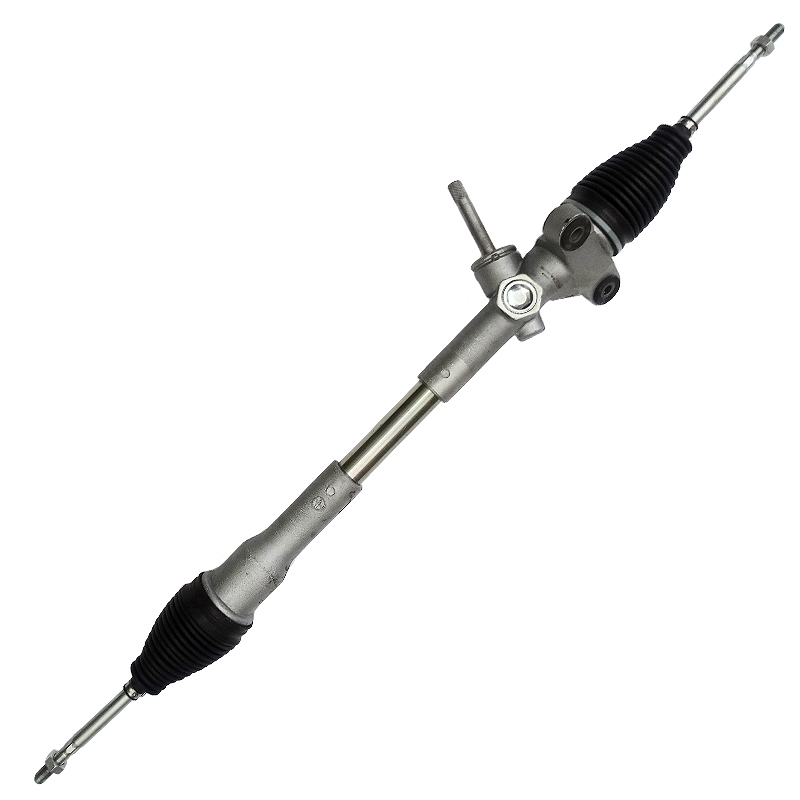
How does a steering rack work?
The steering rack is an important mechanical component in the steering system. It helps the driver change the direction of the vehicle by converting the rotation of the steering wheel into the rotation of the wheels. Whether it is manual steering or power steering, the role of the steering rack is the same, which is to transmit the rotational motion to the wheels through the rack and gear system.
1. Working principle of manual steering rack
In the manual steering system, the driver applies a certain amount of force through the steering wheel, and this force is transmitted to the steering rack through the steering column. The driver needs to overcome the friction and resistance in the steering system and apply steering force directly to the wheels. The working method of the manual steering system is usually without any auxiliary devices. The driver needs to turn the steering wheel with physical strength. Therefore, the steering process is usually more laborious, especially at low speed or parking.
The structural design of the manual steering rack is relatively simple. Since there is no power system, the working load of the steering rack is completely dependent on the force applied by the driver. The meshing surface between the manual steering rack and the steering gear needs to be well lubricated to reduce friction and wear.
2. Working principle of power steering rack
The power steering system (hydraulic or electric) adds a power device to the manual steering, making the steering process easier. Hydraulic power steering systems provide hydraulic assistance through hydraulic oil pumps, while electric power steering systems provide power through electric motors. Regardless of the type of power steering system, it can effectively reduce the force that the driver needs to apply when turning the steering wheel.
In the power steering system, the steering rack still plays a vital role. It is responsible for transmitting the rotational force of the steering column to the wheels. However, due to the power assistance of the system, the load on the steering rack is relatively small, so the driver does not need to apply too much force when turning the steering wheel.
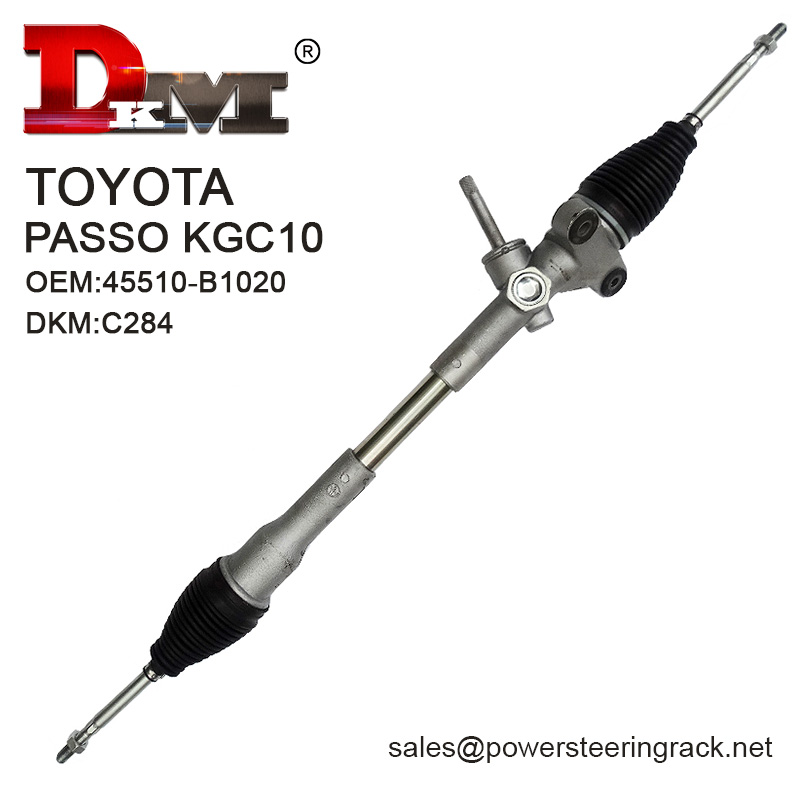
Pressure comparison between non-powered steering rack and manual steering rack
1. Definition and distribution of pressure
Pressure is the force exerted by an object or substance per unit area. In the steering system, the pressure mainly comes from the force applied by the driver, the friction inside the steering system, and the contact force between the steering rack and the gear. Whether it is a manual steering system or a power steering system, the steering rack works on the same principle, and its main task is to convert the rotational motion of the steering wheel into the rotation of the wheels. The amount of pressure depends on factors such as the vehicle's driving speed, the type of steering system, and road conditions.
2. Working pressure of powerless steering rack
The difference between powerless steering rack and traditional manual steering rack is not whether they have power assistance or not, but the workload they bear. Without power assistance, the driver needs to provide relatively large force to turn the steering wheel. Since there is no hydraulic or electric power assistance, the driver's force acts directly on the steering rack, so the steering rack is under greater pressure when turning.
● Increased load on the steering rack: In a powerless steering system, the steering rack must bear all the steering force applied by the driver. If the structure of the steering system is unreasonable or there are friction problems, the rack will be more burdened, resulting in increased rack wear.
● Effect of friction: The meshing surface of the steering rack and the gear in the powerless steering system needs to have extremely high wear resistance. Because there is no hydraulic oil or electric power assistance to reduce friction, the friction of the rack is particularly significant during low-speed turns, especially during the driver's steering process, the friction increases, and the pressure on the rack and gear also increases accordingly.
3. Working pressure of manual steering rack
In traditional manual steering rack, the steering rack also needs to bear the steering force applied by the driver. Similar to the powerless steering system, the driver needs to apply more force to complete the steering action when driving at low speed or parking. However, because the manual steering system is usually designed to be simple, and in some models, the design of the wheel and steering system does not take into account too much power assistance, the manual steering rack needs to bear greater pressure.
4. Pressure of power steering rack
Compared with the manual steering system, the power steering system reduces the burden of the steering rack through hydraulic or electric power assistance. The power assistance provided by hydraulic oil or electric motor allows the driver to turn the steering wheel without applying too much force. Although the steering rack still bears the responsibility of steering, the pressure it bears is significantly lower than that of the manual steering system or the powerless steering system. The oil pressure of the hydraulic power steering system and the current of the electric system are adjusted through the system, reducing the friction and pressure between the rack and the gear.
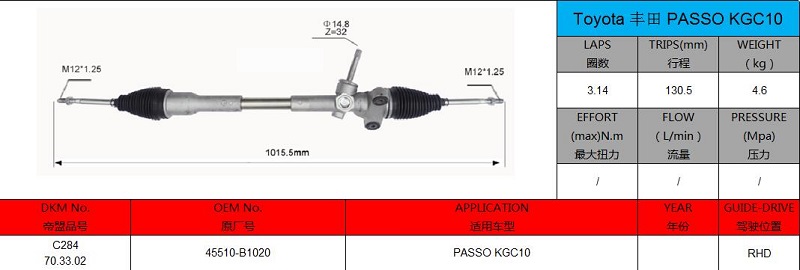
Does the powerless steering rack put more pressure on the components?
From the above analysis, it can be seen that the working principle and pressure distribution of the powerless steering rack and the traditional manual steering rack have many similarities. However, a powerless steering rack does not necessarily put more pressure on components than a manual steering rack. Here are a few key reasons:
1. Pressure differences between powerless and manual steering systems
Powerless steering is actually when the driver directly applies force to turn the steering wheel without hydraulic or electric power assistance. Manual steering systems often do not have power assistance, so the driver applies more force and the steering rack and gear are also heavier. In some cases, the pressure of a manual steering rack may be greater than that of a powerless steering rack because it usually does not have any power assistance to reduce the steering burden.
2. The impact of friction on component pressure
Whether it is a powerless steering system or a manual steering system, the steering rack needs to withstand a certain amount of friction. In the absence of hydraulic fluid or electric power assistance, the friction will increase significantly, especially when driving at low speeds or parking, the friction and pressure of the steering rack will be greater. Although powerless steering racks are sometimes designed with friction reduction measures in mind, friction is still an important factor affecting pressure distribution.
3. System design and pressure distribution of steering systems
The pressure of powerless steering racks and manual steering racks is also affected by the design of the steering system. For example, some manual steering systems are simplified in design and do not consider too much friction issues, so even without power assistance, the system's working pressure can still be well distributed. In other cases, the powerless steering rack may cause additional pressure due to structural complexity or material problems.
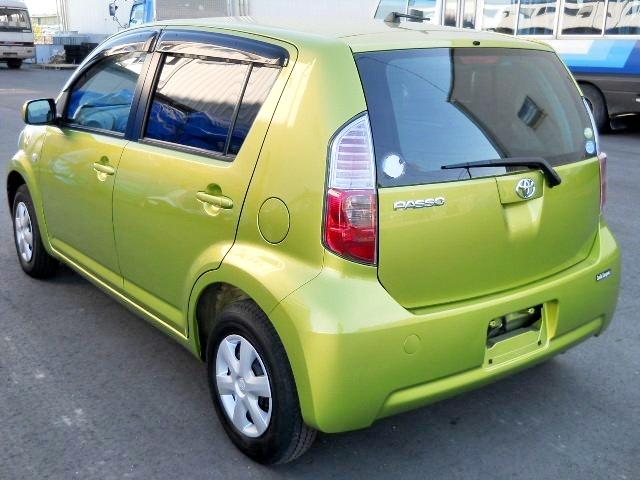
What impact does the powerless steering rack have on the durability of the steering system?
When the powerless steering rack and manual steering rack are under pressure, the durability and service life of the steering system are often closely related to friction, lubrication system and pressure distribution. If the design of the steering rack and steering gear fails to effectively distribute pressure, or the lubrication is not in place, excessive pressure may increase the wear of the rack and gear and reduce the service life of the steering system.
Therefore, whether it is a powerless steering system or a traditional manual steering system, regular maintenance and maintenance are essential to ensure the long-term stable operation of the steering system.
Since its founding in 1996, Guangdong Diamond Auto Parts Co., Ltd. has been a key player in the power steering market, offering durable and cost-effective solutions to clients worldwide. Our advanced manufacturing facility produces 300,000 units annually, serving vehicle brands such as Toyota, Volkswagen, and Hyundai. From customized steering products to low-cost wholesale options, we cater to distributors and buyers in regions like the USA, Italy, and Southeast Asia. Inquire now for competitive pricing and expert service.

